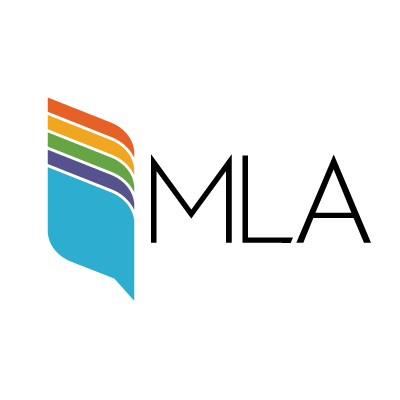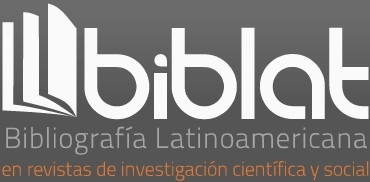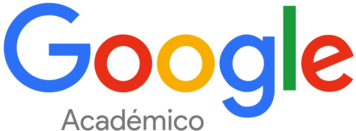Acknowledging the subjectivity of artificial agents. A delimitation of artificial subjects in semiotics
DOI:
https://doi.org/10.35494/topsem.2019.1.41.600Keywords:
nonhuman subjects, computational semiotics, interactive agents, artificial intelligenceAbstract
The constant interaction we have with artificial agents in different
settings (such as calling centers and mobile phone applications)
as well as the various roles they play in everyday tasks (from
providing information, to suggesting activities or helping solve
complex problems) make us forget what status these agents have
in our lives. As we get accustomed to them, we stop wondering
what or who these agents are. Are they things? Are they tools?
Can we considere them subjects? In this article, I will argue in
favor of these agents being semiotic subjects, whose subjectivity
has progressively become more elaborate, but also more definable.
The main goal of this study is to delimit the subjectivity of
these agents, which/who I will call artificial subjects.
Downloads
References
AAMOTH, Doug (9 de junio 2014). “Interview with Eugene Goostman, the Fake Kid Who Passed the Turing Test”. Time. Disponible en:
http://time.com/2847900/eugene-goostman-turing-test/
AARONSON, Scott (12 de junio 2014). “My Conversation with ‘Eugene Goostman,’ the Chatbot that’s All Over the News for Allegedly Passing the Turing Test”. The Blog of Scott Aaronson. Disponible en: https://www.scottaaronson.com/blog/?p=1858
CÁMARA FEDERAL DE CASACIÓN PENAL ( 18 de diciembre 2 014). Causa ccc 68831/2014/cfc1. Capital Federal, Ciudad Autónoma de Buenos Aires. Disponible en: http://www.saij.gob.ar/descarga-archivo?guid=rstuvwfa-llos-comp-uest-o14261110pdf&name=14261110.pdf
COECKELBERGH, Mark (2015). “Artificial agents, good care, and modernity”. Theoretical Medicine and Bioethics, vol. 36, núm. 4, pp. 265-277.
COPELAND, Jack & PROUDFOOT, Diane (2011). “Alan Turing, Father of the Modern Computer”. The Rutherford Journal. The New Zealand Journal for the History and Philosophy of Science and Technology, núm. 4. Disponible en: http://www.rutherfordjournal.org/article040101.html
CORTE SUPREMA DE JUSTICIA (26 de julio de 2017). Radicación núm. 1700122130002017-00468-02. Bogotá, D.C. Disponible en:
https://redjusticiaambientalcolombia.files.wordpress.com/2017/07/habeas-corpus-oso-chucho.pdf
DORRA, Raúl (julio-septiembre 2016). “Alteridad y projimidad: para una semiótica del cuidado”. Elementos, núm. 103, vol. 23, pp. 3-12. Disponible en: http://elementos.buap.mx/num103/pdf/Elem103.pdf
GASCA SALAS, J. (2007). “Alteridad, corporalidad social del sujeto y politicidad” (Artículos y Miscelánea). Mundo Siglo XXI. Revista del Centro de Investigaciones Económicas, Administrativas y Sociales del Instituto Politécnico Nacional, núm. 8, pp. 97-108.
GONZÁLEZ DE REQUENA FARRÉ, Juan Antonio. (2017). “Fronteras del sujeto. Un enfoque liminar de la subjetividad lingüística”. Lenguaje, núm. 45, vol. 1, pp. 89-113.
HARARI, Yuval Noah (2016). Homo Deus: breve historia del mañana. México: Peguin Random House.
HERNÁNDEZ, Isauro (1963). “La psicología terapéutica rogeriana”. Revista de Psicología, núm. 8, pp. 173-179.
IBM (2011a). “A Computer Called Watson”. ibm 100. Icons of Progress. Disponible en: http://www03.ibm.com/ibm/history/ibm100/us/
en/icons/watson/
___________ (2011b). “Deep Blue”. IBM 100. Icons of Progress. Disponible en: http://www.03.ibm.com/ibm/history/ibm100/us/
en/icons/deepblue/
JURAFSKY, Dan & MARTIN, James H. (11 de octubre 2017) [en preparación]. Speech and Language Processing: An Introduction to Language Natural Processing, Computational Linguistics, and Speech Recognition. Disponible en: https://web.stanford.edu/~jurafsky/slp3/
___________ (2008). Speech and Language Processing: An Introduction to Language Natural Processing, Computational Linguistics, and Speech Recognition. Upper-Saddle River, Nueva Jersey: Pearson/Prentice Hall.
LAUKYTE, Migle (2017). “Artificial agents among us: Should we recognize them as agents proper?” Ethics and Information Technology, núm. 19, pp. 1-17.
LOPATTO, Elizabeth (10 de junio 2014). “The AI That Wasn’t: Why ‘Eugene Goostman’ Didn’t Pass the Turing Test”. The Daily Beast. Disponible en: https://www.thedailybeast.com/the-ai-that-wasntwhy-
eugene-goostman-didnt-pass-the-turing-test
OBERTI, Liliana (2003). “Semiótica de las pasiones y sujeto de conocimiento”. XI Jornadas de Reflexión Académica. Buenos Aires: Universidad de Palermo, pp. 81-83.
PRESS ASSOCIATION (9 de junio 2014). “Computer simulating 13-yearold boy becomes first to pass Turing test”. The Guardian. Disponible en: https://www.theguardian.com/technology/2014/jun/08/
super-computer-simulates-13-year-old-boy-passes-turing-test Press Team at the University of Reading (8 de junio 2014). “Turing Test success marks milestone in computing history”. University of Reading Press Releases. Disponible en: http://www.reading.ac.uk/news-and-events/releases/PR583836.aspx
RICO SULAYES, Antonio (2016). “Las funciones de creencia en la lingüística computacional: una reconsideración de los modos del creer”. Tópicos del Seminario. Revista de Semiótica, Los modos del creer, núm. 36, pp. 139-161.
SAMPLE, Ian & HERN, Alex (9 de junio 2014). “Scientists dispute
whether computer ‘Eugene Goostman’ passed Turing test”. The Guardian. Disponible en: https://www.theguardian.com/technology/
/jun/09/scientists-disagree-over-whether-turing-test-hasbeen-passed
SELLERS, Michael (2013). “Toward a comprehensive theory of emotion for biological and artificial agents”. Biologically Inspired Cognitive Architectures, núm. 4, pp. 3-26.
TURING, Alan M. (1945). Proposed electronic calculator. Report for National Physical Laboratory.
___________ (1950). “Computing Machinery and Intelligence”. Mind, núm. 9, pp. 433-460.
VELOSO, Manuela M. (2002). “Entertainment robotics”. Communications of the ACM, núm. 45, vol. 3, pp. 59-63.
WEIZENBAUM, Joseph (1966). “Eliza–A computer program for the study of natural language communication between man and machine”. Communications of the ACM, núm. 9, vol. 1, pp. 36-45.
___________ (1976). Computer Power and Human Reason: From Judgement to Calculation. Nueva York: W.H. Freeman and Company.
Downloads
Published
How to Cite
Issue
Section
License

Tópicos del Seminario is licensed under a Creative Commons Reconocimiento-NoComercial-CompartirIgual 4.0 Internacional License.














